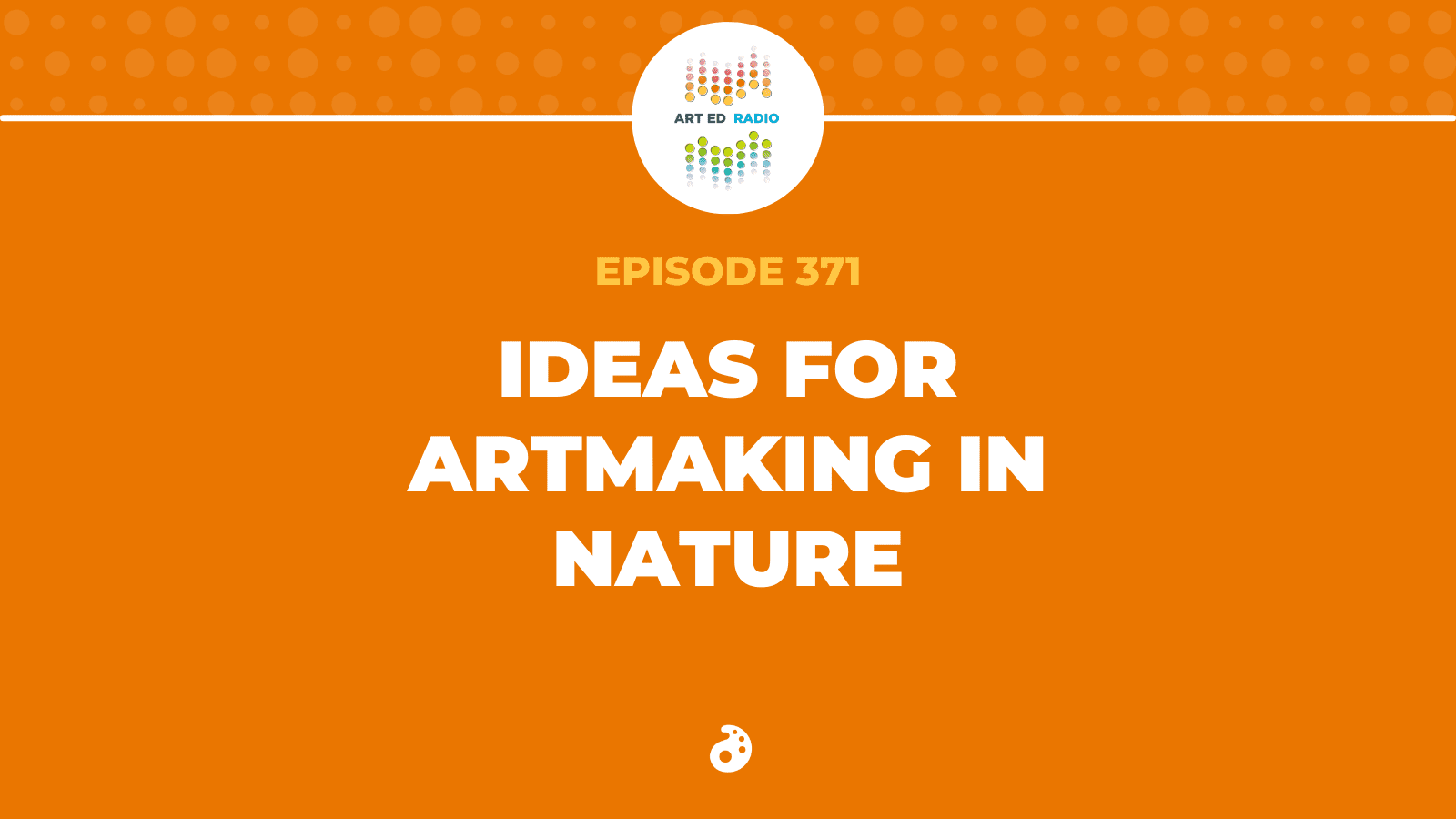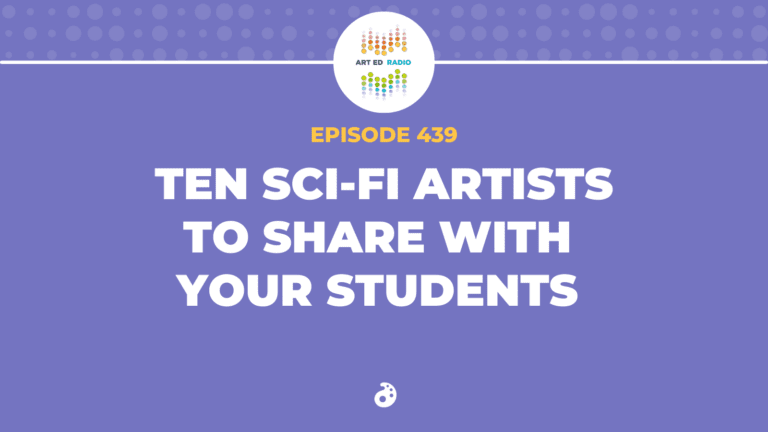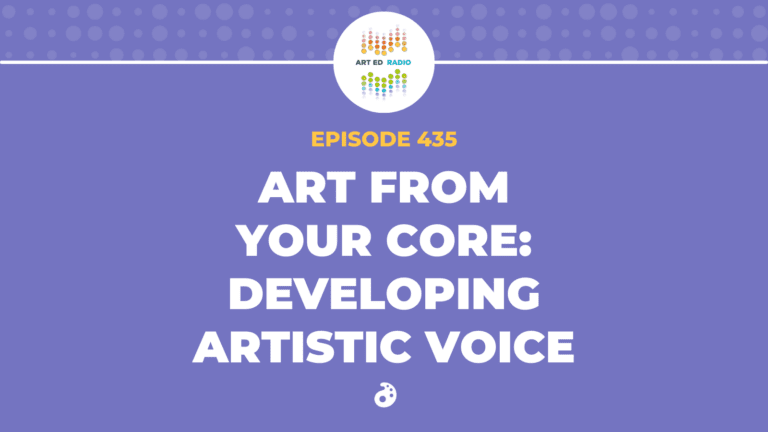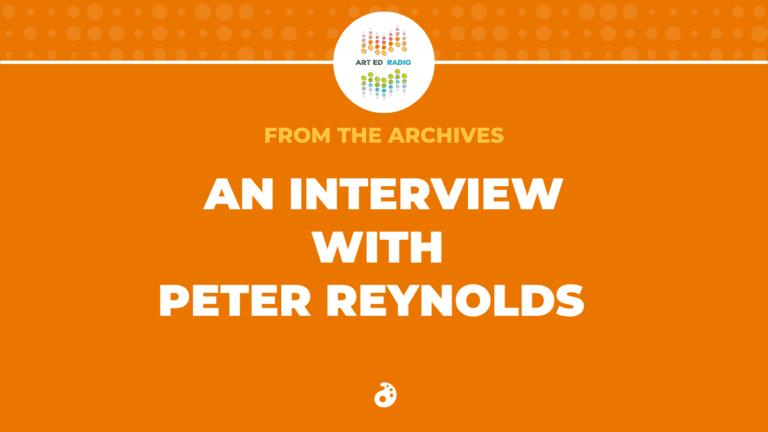Due to a number of listener requests, Tim takes today’s episode outside! More specifically, he is talking about a number of ideas for artmaking activities you can do outdoors with your students. The conversation covers incorporating nature in simple lessons to architectural marvels and earth artists, as well as the reasons why students benefit from being outside. Tim also highlights a number of recently published AOEU articles that explore these ideas even further. Full episode transcript below.
Resources and Links
- 13 Art Ideas that are Perfect to Take Outdoors
- 7 Lessons to Take Art Out Into Nature
- 5 Famous Architectural Works and 10 Fascinating Earth Artists
- Tips to Incorporate and Plan the Perfect Art Nature Lessons

Transcript
Tim: Welcome to Art Ed Radio, the podcast for our teachers. This show is produced by The Art of Education University, and I’m your host, Tim Bogatz.
Now, the next couple of weeks of podcasts are coming about because we’ve had just a huge response from the art teaching community, doing a great job of writing in with questions, with conversation pieces, thinking about what we should talk about, suggestions about what we should cover on the podcast. This week, we’re going to talk about all different things going on with nature and teaching outdoors because I’ve gotten a ton of questions on that, and we’ll get to that in just a second. But I also want to tell you that next week, we are going to do a podcast. Amanda and I are going to do a mailbag podcast answering all sorts of different questions from our teachers all over the country. Now, episodes with Amanda have been pretty popular every time she comes on and we’ve decided to make it a recurring thing. For the near future, the first episode of every month is going to be our monthly mailbag episode.
Next week, first week of June, will be the first of those mailbag episodes. We really want your questions. We’ve solicited some questions on Instagram and in the weekly email on Sunday, and I’m now here too. This is me asking for questions as well. So if you want to hear yourself in the mailbag, you can email me at timothybogatz@theartofeducation.edu or, and this is the exciting part, you can send us a voice message. You can call 515-209-2595. Let me say that one more time in case you want to write it down. If you want to leave a voice question, that’s 515-209-2595. We started asking for your questions about summertime and it’s really branched out to a lot of different things. So we’re going to answer a lot of different questions. Keep an eye on summertime, but we’ll see where it goes from there. But we want to talk about just everything that’s happening in our art teaching community and we want you to be a part of it, so send us your questions.
Amanda and I are both really excited to hear from you and we are thrilled to have a mailbag episode for you next week. Now, like I said, this week’s episode actually comes from a few messages that I’ve been receiving from listeners over the past couple of weeks. People have been asking for new ideas for taking kids outdoors, for doing lessons outside, for incorporating nature, for just taking advantage of the nice weather, or as a listener named Colby in Ohio sent a message to me, “Do you have any ideas that don’t involve Andy Goldsworthy or just telling my kids to take their sketchbook outside?,” which Colby, no shade at either of those ideas, Andy Goldsworthy really resonates with kids. I love having kids take their sketchbooks outside, but I understand where Colby’s coming from. It can be a little much to see those same ideas over and over, but yeah, we do have a lot more ideas than that.
So first one that I want to share is just that if you want to do some extra listening, I recorded a podcast with some outdoor art making ideas back in 2020, I think it was. I feel like we’re right in the middle of the pandemic. We are just learning that COVID was probably airborne and a lot of places had directives to get kids outside. So teachers were searching for a lot of ideas and there are some fun ones there if you want to go back and listen. If you don’t want to revisit the things where you’re thinking about and talking about in the middle of the pandemic, I understand that too, but if you’re looking for ideas, what I talked about there were good. I’m talking about outdoor drawing, observational drawing, timed drawing, nature-related sculptures. There are ideas in there from Abby Schukei, from Ian Sands, just a lot of great stuff there.
However, more recently, there are just a lot of great resources that are available on AOEU, including a plethora of articles that have been published over the past few weeks just from a variety of writers. I want to shout those out and talk about all of those, just a lot of great ideas that I think are worth shining the spotlight on. I think if you are looking for ideas for nature, for getting outside, for creating art in the outdoors, those are worth checking out. First article is from Rebekah Hower and it’s called 13 Art Ideas That Are Perfect to Take Outdoors. That article starts with just reasons why. I’ll talk about those in just a second, but there are a ton of lessons in there with chalk drawing, with shadow drawing, photography, monoprinting, cyanotype, so much more, just a lot of great ideas there. But what I really liked and what I really want to highlight there is the part of the article that I just mentioned where Rebekah lists some reasons for taking the students outside.
A couple there that I want to point out, number one, just having a fresh perspective. Just being outside allows students to see things from a different angle and just looking at things differently as we know can inspire new ideas. It can inspire creativity. It can inspire kids to make new connections. I guess speaking of those connections, Rebekah mentions connecting to nature. I think when kids are creating art in nature, they appreciate what’s around them. They begin to appreciate the natural world and they’re able to draw those connections and make their own personal connections with nature, with everything that surrounds them. That leads to a better understanding of the importance of finding oneself and finding one’s place in the environment, and hopefully, leaves the idea of the importance of preserving their environment as well. So I think that’s worthwhile.
Couple of other ideas. When you get kids outside working together, there’s a great sense of community. You can really get kids collaborating on some cool things. There’s some extra reading that Rebekah links to and just talking about how spending time in nature reduces anxiety, reduces stress, how doing work outside presents a new set of challenges and the problem solving that we’re asking students to do, the importance of that. And again, going back to that communication and collaboration, she’s got an article there that links there that talks about how kids develop social skills and team building, which are obviously incredibly worthwhile skills that a lot of us are seeing lacking right now. So if you can get kids working together, you can see some of the benefits that come with that.
Hey, another article that I think is worthwhile, it’s from friend of the pod, Mariana VanDerMolen. She’s got a very cool article along similar lines to what Rebekah wrote, but Mariana’s article is called 7 Exciting Outdoor Lessons You Can Use to Take Art Out Into Nature. She does another good job of giving you some resources to show how and why taking your art lessons outside can be so effective for your students, how it can be good for them. So a quick quote from that article, she says, “Being outside reduces stress, anxiety, and depression while boosting self-esteem, mood, and confidence. Engaging in outdoor art education allows students to explore and practice critical thinking in a new environment.” Inside of there, she has a link to talk about how being outside reduces stress, anxiety, and depression and another link about how outdoor education leads to more exploration and more practice for students with critical thinking.
Again, if you want to do a deep dive on any of this or if you need reasons to talk to your admin or extra information for parents about why you’re going outside, why you’re incorporating nature, why you’re doing all those things, there’s a lot there. But beyond that, there are a ton of great ideas inside of that article. A couple ideas that were not necessarily new to me, but I haven’t visited in a while, yarn bombing was cool. I feel like that was really popular for a little bit a few years back, but I’d forgotten about it. It’s not something I ever did with my students, but just seeing some photos of that, thinking about that again, that can be a fun one. Then another one that I saw in that article was stump painting, just taking old tree stumps and creating compositions right on there and just talking about why trees are cut down for various reasons, the purpose they serve, talking about how they can be repurposed and creating new art with them, and so I thought that was really cool.
Also, just talking about nature weaving, just creating really large looms. You do that by nailing branches or fixing branches to trees or wood supports in whatever area you’re going to be creating art. Then you can warp the looms ahead of time with string. Then you invite the kids to collect materials for the weft, whether that be leaves or sticks or grasses or plants or whatever you can find with nature. Students can all work together to weave their items into just this tapestry and I think that’s a really, really cool idea. There’s a good photo in that article. That’s worth looking at to give you an idea of what can come from that, but I think that’s a very cool idea. All right. Another piece is an article from Josh Chrosniak, also a friend of the pod, but I really like this one. It was called 5 Famous Architectural Works With a Nature Component To Share With Your Students. He talks about Angkor Wat, talks about Falling Water, the Itsukushima Shrine and other pieces from all around the world, architectural just marvels that I think really can resonate with students.
I think if you read that article, think about those ideas and just put in a little bit of your own creativity. I think you could easily put together an activity or two that gets your kids outside and designing or even creating their own architectural works. Then following up on that, just thinking along the lines of inspiring kids or showing them work that resonates with them, Rebekah Hower, again, wrote an article about 10 earth artists that you don’t want to miss. The aforementioned Andy Goldsworthy is in there of course, but also Robert Smithson, Agnes Denes, Ana Mendieta. Ana Mendieta is one of my all-time favorite artists. Please go look her up if you’re not familiar with her. Her sculptures, they are incredible. And Walter De Maria, who he’s got a lightning field piece that my kids always love talking about and one that I could chat about for hours.
I’m going to stop myself from nerding out about art history right now though, just realizing I should probably pull it back a little bit. I will just tell you to go check out that article. Go check out those artists. If you need a little bit more reason why it’s worth showing these things to your students, Rebekah has a great breakdown in the article of how looking and learning about earth artists can really benefit your students. Then finally, just I guess one last article that I want to point out is from Josh Chrosniak again and it’s called Tips to Incorporate and Plan the Perfect Art Nature Lessons. Now, he gives you some good ideas. Again, we have all of these articles about inspiration, about artists that are going to inspire students and types of art there that you can create, but Josh is turning that into some actionable steps. It gives you some good ideas on how to think about incorporating nature into some current lessons that you might have already, some ideas on planning your lessons and some specifics of what you can do to create something new.
I think the entire article is just a really good guide to mesh what you’re already doing in your classroom with some brand new ideas. But yeah, I think that’s going to be about it for highlighting what we’ve seen recently. I hope that as you look through all of this, as you read some of these articles, at least one or two of these ideas can be helpful for you. A huge thank you to the AOEU writing team for putting so many great ideas out there. I hope between my podcast from a while back and all of the new stuff that’s out there, you can find some ideas to get outside, get your students engaged in some really exciting art making. For those of you that wrote in, I’m hoping you find what you need in here. Colby, looking at you. I’m hoping you have a couple ideas you can use that go beyond Andy Goldsworthy and sketchbook. Write me back and let me know what you think.
All right, before we go, just one last call for any questions for the first monthly mailbag episode that’s going to be coming next week. As I said, Amanda and I are putting out questions that originally we planned on just diving into summertime ideas and what teachers can be doing over the summer, but the questions we have been receiving are very wide-ranging and I think it’s going to be a long episode. It takes a lot of twists and turns. We’re going to be talking about a lot of stuff, but we are happy to answer any questions summer-related or otherwise. So again, email me timothybogatz@theartofeducation.edu or send us a voice message, 515-209-2595. We’re super excited to engage with everybody in the art teaching community, talk about what’s on everybody’s mind, and we’ll see what we can put together for the mailbag next week. We’ll talk to you then.
Art Ed Radio is produced by The Art of Education University with audio engineering from Michael Crocker. Thank you for listening. One last thing, sorry, I keep throwing more and more at you, but I just thought about we have a couple of really good resources in PRO about making art outside. You can find a PRO Learning Pack from Sarah Krajewski. It’s really, really good, really worth checking out if you’re a PRO member. Okay. Now, I promise this is it. Okay. Short episode this week. Hoping that you enjoyed it. I think the mailbag’s going to run as a long episode next week. We’ll see what comes of it, but we’re excited to talk to you there and we will talk to you next week.
Magazine articles and podcasts are opinions of professional education contributors and do not necessarily represent the position of the Art of Education University (AOEU) or its academic offerings. Contributors use terms in the way they are most often talked about in the scope of their educational experiences.



